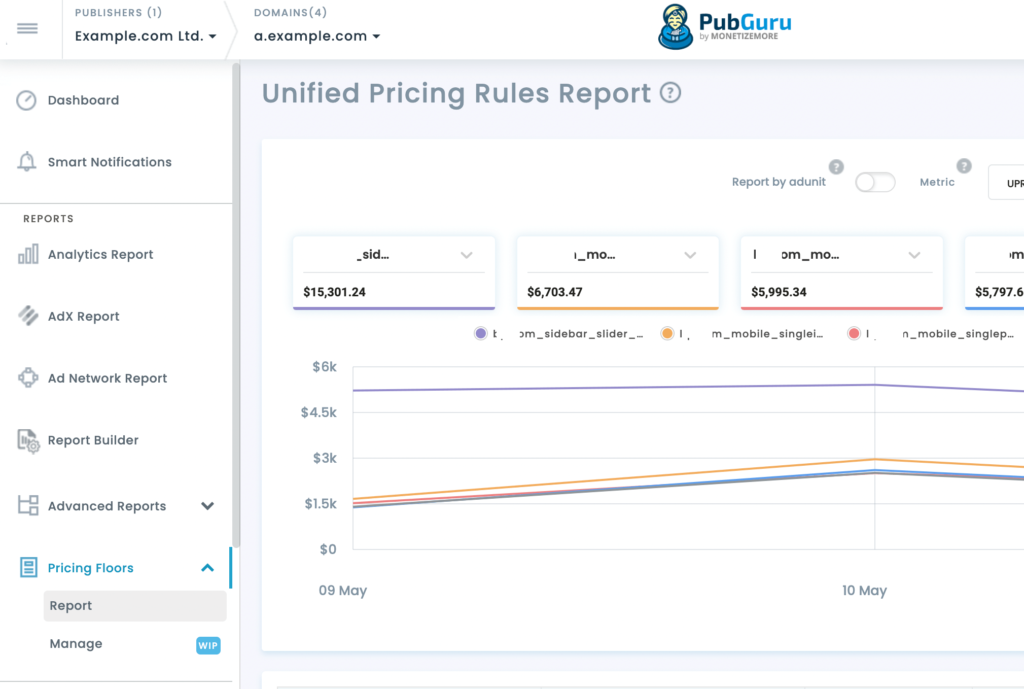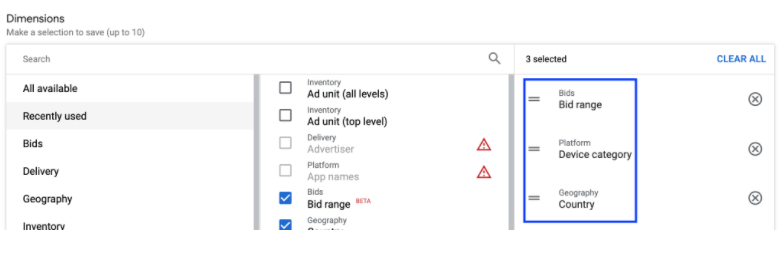There could be many reasons behind the use of Unified Pricing Rules (UPR). Some publishers use it to exclude cheap paying ads which are usually causing redirects or popups on the site, or to simply push the bids up. Setting up a target CPM or floor CPM sends a message to advertisers on how valuable your inventory is – but there is a downside to it, when not properly done.
UPRs could make or break your overall monetization strategy. It takes careful planning and execution to ensure that you maximize the benefits. If you are only running Ad Exchange and nothing else, to monetize your ad inventory, assess whether it’s right for you or not.
Why Publishers Might Hesitate with UPRs (even with just AdX)

It’s natural to be cautious about any change that could potentially impact your ad revenue. Here are two common reasons why publishers might hesitate to implement Unified Pricing Rules, even if they primarily rely on AdX:
- Fear of Lost Revenue: The primary goal of UPRs is to increase revenue, but there’s a fine balance to strike. Setting floor prices too high can backfire, scaring away potential bidders and lowering your fill rate. This leads to missed opportunities and potentially less overall revenue.
- Complexity: Setting up UPRs within Ad Exchange requires understanding bid landscapes, pricing strategies, and targeting criteria. Additionally, the process demands ongoing monitoring and optimization. This can feel overwhelming, especially for smaller publishing teams with limited resources.
These hesitations are valid! That’s why a cautious testing approach, starting small and gradually expanding, is crucial when implementing UPRs on AdX.
When UPRs Make Sense for AdX-Centric Publishers

While UPRs can be valuable for many publishers, they might be particularly worthwhile to consider if you’re primarily using AdX and experience the following:
- Rock-Bottom CPMs in Certain Geos: If specific countries consistently generate very low CPMs, UPRs can help filter out those bids, potentially raising your overall average.
- Underperforming Ad Categories: Are certain ad categories consistently driving lower revenue? UPRs can block them, safeguarding your valuable inventory for better-paying advertisers.
- Intrusive Ad Experiences: If you notice a spike in low-quality ads (excessive redirects, pop-ups), UPRs can act as a quality filter, protecting user experience.
- Traffic Volume: It’s important to be realistic. If your traffic volume is very low, the impact of UPRs might be less noticeable. However, for publishers with moderate to high traffic, even small CPM increases can add up to a meaningful revenue boost.
UPRs are not a magic bullet, but a tool within your toolkit. If you are struggling with the issues outlined above, they might be worth testing carefully – especially if your current AdX setup leaves room for improvement.
Preparation:
- Start from square one – meaning, no UPR at all. This would allow you to assess how your inventory performs.
- Run a report on Bid Ranges

- Break down the report further by device category and by country. This may serve as your baseline.

Pricing Structure and Rules Priority
UPRs are not prioritized, and their order is not important. The pricing rule that’s chosen in a given ad request is solely based on targeting.
- If two UPRs target overlapping inventory, the one with the higher floor price applies.
- Use “broad to narrow” targeting approach.
- Lower floors for pricing rules that apply to a broader audience (e.g. Run of network)
- Set higher floors as you narrow down, targeting to segment your inventory. For example, by country, size, and ad unit.
- The floor price defaults to zero if no UPRs match the targeting.
First versus Second-Price Auction
The bidder pays the second-highest price in a second-price auction. In this case, the floor price may increase the closing price of the auction.
In a first-price auction, buyers pay what they bid, so the floor price is of no use in closing the gap between the highest bid and the second bid.
Google has now transitioned to first-price auction.
Things to Consider When Setting up Unified Pricing Rules
- Setting floors too high can result in revenue loss as bidders drop out of the auction. The volume of unfilled ad impressions could potentially spike.
- Report on Optimization Type will provide insights on the uplift brought by target CPM in UPRs.

- Test with Hard floors vs Target CPM. Google is recommending the use of Target CPM but tests on some publishers have proven otherwise. For some, Hard floors worked better and increased their overall revenues.
The Bottom line
Running Ad Exchange alone doesn’t mean you can’t implement UPRs. Although this setup is much more fragile than having multiple demand sources in competition, it might be worth testing out—with extreme caution.
Start conservatively and slowly (e.g. 1 to 2 ad units, 1 to 2 countries initially), then monitor the impact on overall performance.
Don’t let your impressions go to waste. Set up a passback or House line item to minimize unfilled impressions. Remember not to use Google Demand as House, though, as it’s considered a policy violation. You can opt to use a 100% fill third-party Ad Network or use your own image creative and link to other sections of the site to increase pageviews.
Partner with MonetizeMore if you’d like to explore competing multiple demand sources to increase your ad revenues.
source https://www.monetizemore.com/blog/do-i-need-unified-pricing-rules-on-adx/



0 Comments